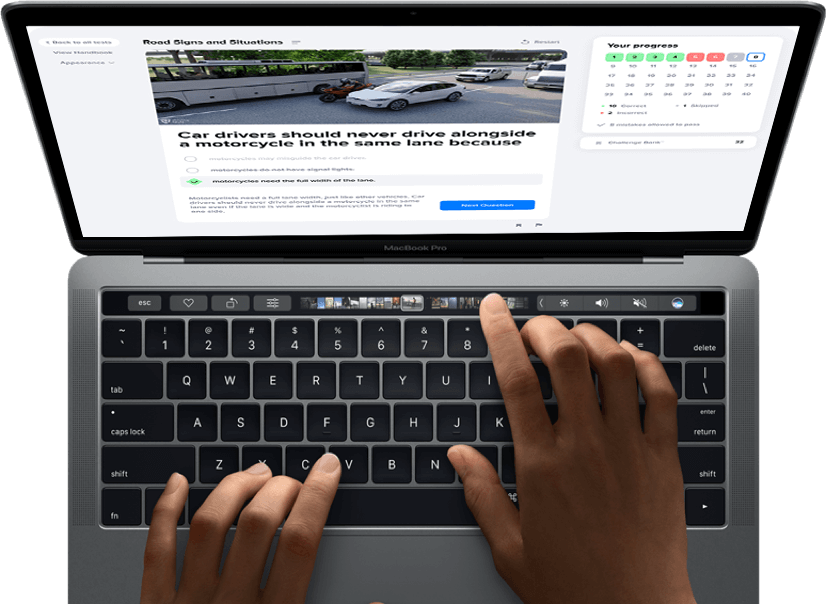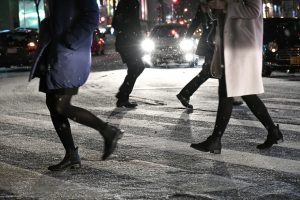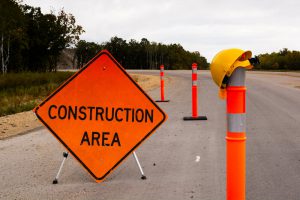Contents
- Recognize school zones
- Reduce your speed when travelling through school zones
- Expect increased traffic in and around school zones
- Be aware of an unusually high concentration of pedestrian crosswalks in school zones
- Be on the lookout for buses
- Obey crossing guards, traffic officers, and policemen
- Severe fines
What is a typical school zone speed limit in the US?
A typical school zone speed limit in most US states is between 15 mph and 25 mph (25 and 40 km/h) unless otherwise posted. Oftentimes, school zone signs have the “When children are present” notice. Make sure you always drive slowly and carefully near schools, residential areas, parks and playgrounds: children may suddenly run into the street. Be sure to obey the directions of school safety patrols or crossing guards.
School zones are put in place to ensure the safety of children in and around schools. While class is in session, drivers are responsible for maintaining safety and awareness on the streets surrounding schools. All children should be able to walk or bike to and from class without fear of being hit by passing vehicles. As drivers, we must not be careless around school zones. We must respect every school zone speed limit and understand the traffic laws for these locations. We must follow them at all times, too.
Below are some of the universal regulations regarding school zones and some tips for keeping the kiddos safe if your morning commute happens to pass a school:
How To Drive In and Around School Zones
- 1
Recognize school zones
Whether they are a little too sleepy while driving in the mornings or are distracted by a cell phone conversation, many drivers breeze right through school zones without being aware that they are haphazardly driving their large vehicles in close proximity to small children. The number one rule to remember about school zones is that you must be aware of them. Almost all school zones are preceded by numerous warning signs, flashing lights, and/or speed bumps. All these things are in place to ensure that drivers are aware of the approaching school zone before it is too late. Keep your eyes on the road and your mind on the task at hand at all times.
- 2
Reduce your speed when travelling through school zones
The warning signs that precede school zones often included a reduced speed limit sign. Depending on the type of roadway the school zone is in, this speed limit could be as low as ten or fifteen miles per hour. Regardless, the speed limit in school zones will be significantly lower than what is posted on other areas of the same roadway. You need to be aware of an upcoming school zone so that you have time to safely reduce your speed without slamming on the brakes at the last minute.
When you see the lights flashing, proceed at the speed indicated on the sign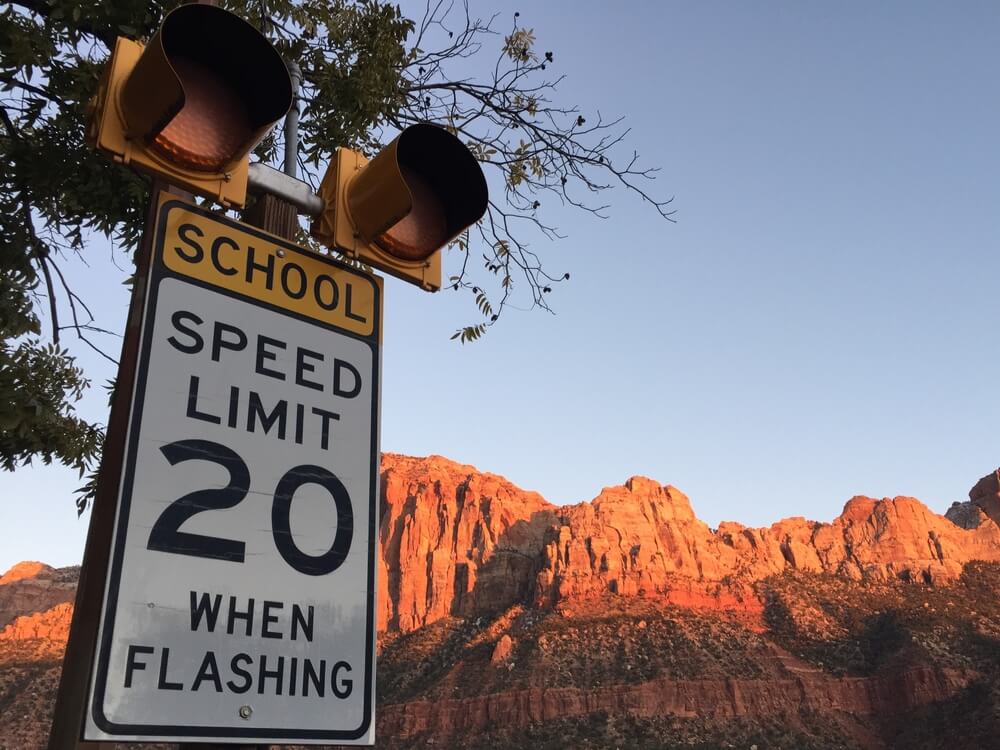
- 3
Expect increased traffic in and around school zones
Expect increased traffic in and around school zones, especially between seven and nine in the morning and two and four in the afternoon. These are the times when parents and buses are delivering kids to the school or picking them up after class is over. Parents who pick-up their children may have their cars parked down the street for up to an hour before school dismisses. Drive slowly and carefully during these times to keep students and parents safe.
Keep in mind that kids may act on impulse, so be ready to brake straight away
- 4
Be aware of an unusually high concentration of pedestrian crosswalks in school zones
Several of these walkways may be positioned in school zones to facilitate parents and students walking to and from nearby neighborhoods. These crosswalks will appear as a series of parallel white pavement markings stretching from one side of the road to the other and will often be marked with warning signs. Always yield to pedestrians on the road, even those who are not using the marked crosswalks.
Pedestrian crossing near a public school marked by a sign (Brett VA)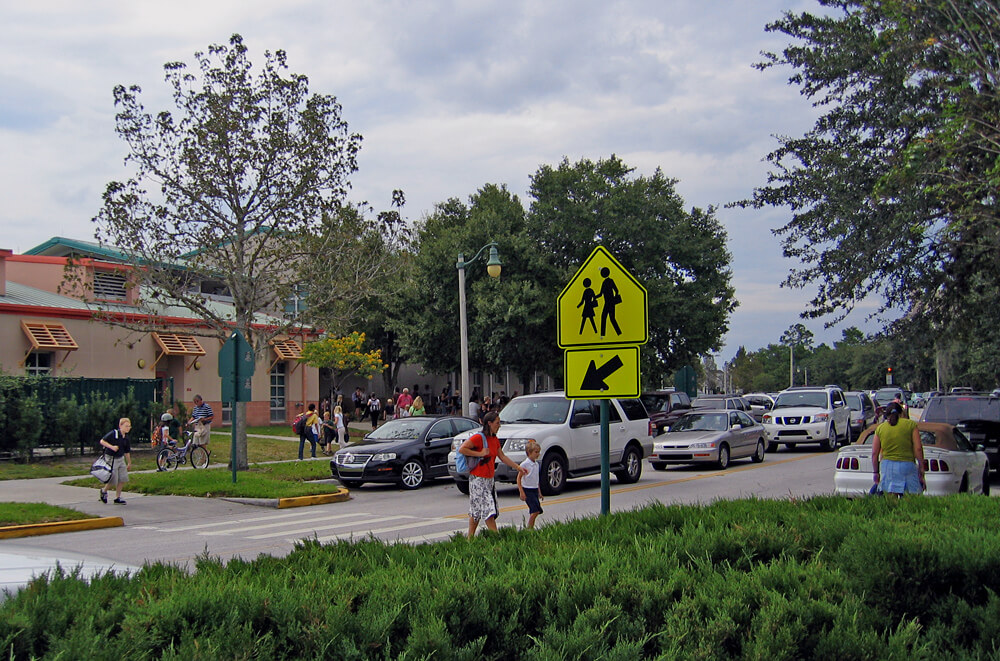
- 5
Be on the lookout for buses
Buses often have a difficult time navigating the increase in traffic during the mornings and afternoons in school zones. Yield right of way to buses at all times. Make sure that you stop when their stop sign is deployed. Whether driving through a school zone or not, keep a watch out for children waiting on the curb for their bus when driving in the mornings. Also, watch for students being dropped off at their homes in mid-afternoon.
The following video will help you refresh your knowledge of driving rules around school buses:
- 6
Obey crossing guards, traffic officers, and policemen
Crosswalks on busy roadways in school zones are often controlled by crossing guards, people who have the legal authority to halt traffic in order to let students and parents cross the road safely. You might also encounter traffic officers in school zones. These men and women take precedence over any traffic signs or signals that normally control the area and direct the heavier than normal traffic in the mornings and afternoons. Police officers often station their cars around the perimeters of school zones as an extra precaution. If you see flashing lights or a police car in a school zone, you can be certain that students are in the vicinity.
- 7
Severe fines
Be aware that most states and municipalities impose more severe fines for breaking traffic laws within school zones. Many areas double or triple speeding fines in and around school zones. Please understand that these increases are meant to dissuade drivers from risking the lives of young children because they are in a hurry or are not paying attention while driving through school zones.
Nothing is more precious than the life of a child. Slow down, pay attention, and ensure the safety of students as they travel to and from school.
Free DMV Practice Tests
- Alabama
- Alaska
- Arizona
- Arkansas
- California
- Colorado
- Connecticut
- Delaware
- District of Columbia
- Florida
- Georgia
- Hawaii
- Idaho
- Illinois
- Indiana
- Iowa
- Kansas
- Kentucky
- Louisiana
- Maine
- Maryland
- Massachusetts
- Michigan
- Minnesota
- Mississippi
- Missouri
- Montana
- Nebraska
- Nevada
- New Hampshire
- New Jersey
- New Mexico
- New York
- North Carolina
- North Dakota
- Ohio
- Oklahoma
- Oregon
- Pennsylvania
- Rhode Island
- South Carolina
- South Dakota
- Tennessee
- Texas
- Utah
- Vermont
- Virginia
- Washington
- West Virginia
- Wisconsin
- Wyoming

